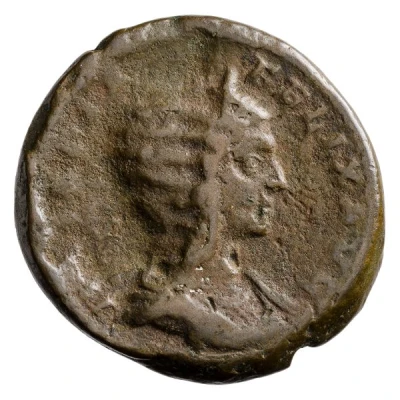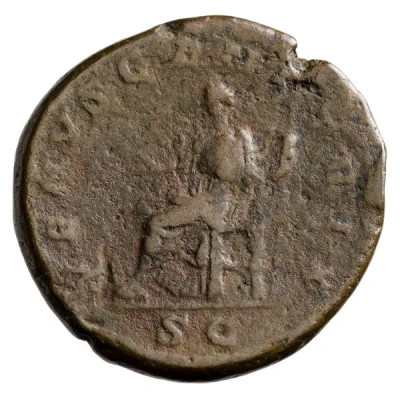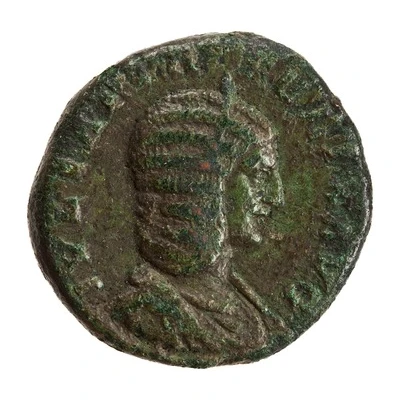


© Münzkabinett der Universität Göttingen (CC BY-NC 4.0 DE)
As - Julia Domna VENVS GENETRIX S C; Venus
| Bronze | 11.3 g | - |
| Issuer | Rome › Roman Empire (27 BC - 395 AD) |
|---|---|
| Emperor | Caracalla (Marcus Aurelius Antoninus Caracalla) (198-217) |
| Type | Standard circulation coin |
| Years | 211-217 |
| Value | As = 1⁄16 Denarius |
| Currency | Denarius, Reform of Augustus (27 BC – AD 215) |
| Composition | Bronze |
| Weight | 11.3 g |
| Shape | Round (irregular) |
| Technique | Hammered |
| Demonetized | Yes |
| Updated | 2024-10-06 |
| Numista | N#274053 |
|---|---|
| Rarity index | 100% |
Reverse
Venus, draped, seated left, extending right hand and holding sceptre in left hand.
Script: Latin
Lettering: VENVS GENETRIX S C
Translation:
Venus Genetrix. Senatus Consultum.
Mother Venus. Decree of the senate.
Comment
Example of this type:Münzkabinett der Universität Göttingen
Source:
Online Coins of the Roman Empire (OCRE)
Interesting fact
The coin featuring Julia Domna, the wife of Emperor Septimius Severus, is notable for its depiction of the goddess Venus on the reverse side. Venus was an important deity in Roman mythology, associated with love, beauty, and fertility. The inclusion of Venus on the coin may have been a way to emphasize the emperor's connection to the gods and to promote the idea of imperial divine right. Additionally, the use of Venus on the coin may have been a nod to the emperor's own reputation as a patron of the arts and a promoter of Roman culture.

